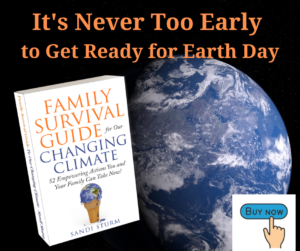We are currently parked in a campground with gravel sites. It feels more natural to me than concrete. But with concrete pads, the management can easily keep it clear of waste, like cigarette butts.
On a nice day I can sit outside (even in February) and take in the view. But when I looked down, I noticed a few cigarette butts scattered around in the gravel. Until this morning I thought it was just a waste issue. But the issue is much larger than that.
Cigarettes are plastic waste.
A partnership between the UN Environment Program (UNEP) and the Secretariat of the World Health Organization Framework Convention on Tobacco Control (WHO FTCT) is launching a social media campaign to increase awareness about microplastics found in discarded cigarette butts.
Yes, cigarettes are not only a danger to our lungs; they are a danger to aquatic life in ways we never thought about.
So how dangerous is that cigarette butt laying outside in the gravel here in the high desert? That depends where it ends up, because it is not going to disappear on its own any time soon. And multiply that one by the six trillion cigarettes that are produced each year.
About a 1/4 mile away is a reservoir. As with any water in the desert, there are also an abundance of birds and migrating ducks. On the ground a cigarette butt may look like food to the birds, and once they figure out it is not, it could be dropped into that waterway. I know, not likely that thousands of butts will make it into the water this way, but it is one way.
Inside those filters are microplastics known as cellulose acetate fibers. Each butt contains more than 15,000 detachable strands of plastic fiber. When those butts sit out in the sunlight and moisture (like on a beach) they break down and release those microplastics, plus heavy metals and all the other nasty chemicals found inside.
Cigarette butts are one of the most common plastic pollutants in our environment.
1.7 billion pounds of these toxic butts are trashed annually. Multiply that by how many years they have been around. Plastic filters hit the market in 1950 to calm the fears of getting lung cancer. But by 1960 the industry realized that the filters were removing what made cigarettes satisfying, so the filters were made less effective. Jump to 2022 where 98% of filters are constructed from these plastic fibers.
You’ll see them everywhere, including on the beach and along other waterways. Has anyone ever thrown a cigarette into the river, lake, or ocean before? Cigarette butts are recorded as the most common plastic litter on beaches.
A study done by Tom Novotny, one of the first people to research the environmental impacts of cigarettes, found that one cigarette in a liter of water kills half the fish.
We know that when marine life ingest microplastics it results in long term mortality. Plus they enter the food chain and make their way onto our table. Ingesting this hidden toxic mix can cause things like changes to our genetic makeup and brain development. Personally I would like to keep those two things healthy and plastic free.
Now we have a new source of plastic waste – the e-cig. More than 10 million Americans use e-cigs which are considered a hazardous waste (nicotine) and e-waste (battery and other electronic components). You will now find these on the ground in large quantities in high school parking lots and beaches.
Many municipalities are considering banning butts and single use filters. Dr. Novotny stated, “It’s the last remaining acceptable form of littering. People are more likely to pick up their dog poop than cigarette butts.”
If you or if you know someone that smokes, please have discussions about the hazards of microplastics in our environment. It might be an easier discussion than the hazards to our health.









